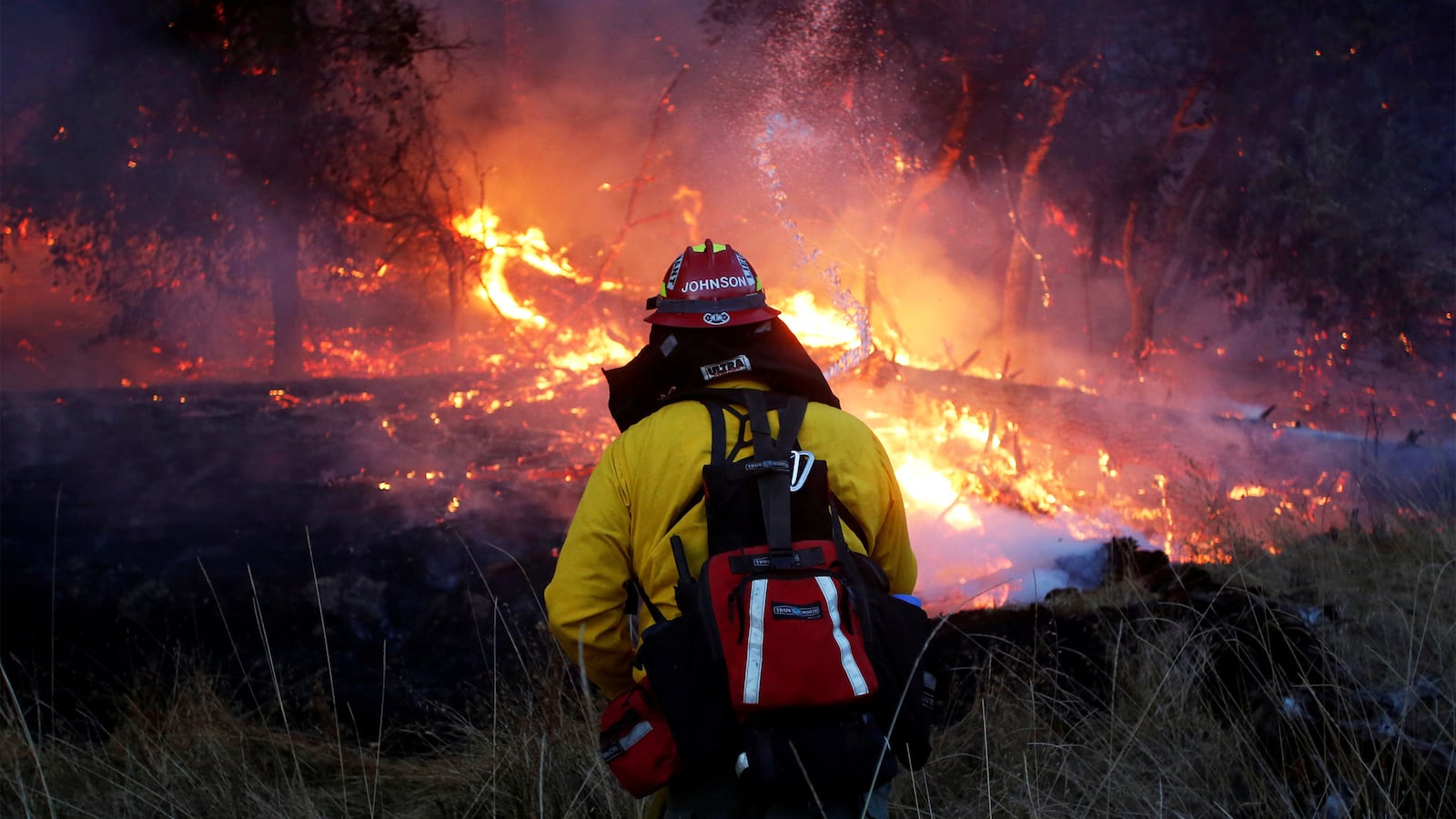California officials are investigating a power company’s role in a series of deadly wildfires that have devastated the state’s wine country.
The origins of the wine country wildfires—which had killed 35 people and destroyed thousands of homes as of Saturday—are still unknown. But on Thursday, California’s Public Utilities Commission launched an investigation into Pacific Gas and Electric Company, a California power company whose power lines reportedly burst into flame in the early hours of the Wine Country fires. The investigation isn’t the first for PG&E. The company has been sued repeatedly for its roles in previous fires and explosions.
On Thursday, California ordered PG&E to preserve all evidence related to the wine country fires, including information on downed power lines and PG&E’s history of clearing vegetation away from those lines.
California investigators have good reason to question the power lines’ role in the fires. Emergency radio communications during the blaze’s early hours reveal a series of electrical fires, a review by the Bay Area News Group found. Over the course of 90 minutes on Sunday night, 911 dispatchers received 10 calls about PG&E power lines, which began sparking in the evening’s intense winds.
In a statement to The Daily Beast, PG&E confirmed that some of their power lines had toppled from the wind and falling trees.
“The historic wind event that swept across PG&E’s service area late Sunday and early Monday packed hurricane-strength winds in excess of 75 mph in some cases,” the company said. “These destructive winds, along with millions of trees weakened by years of drought and recent renewed vegetation growth from winter storms, all contributed to some trees, branches and debris impacting our electric lines across the North Bay. In some cases we have found instances of wires down, broken poles and impacted infrastructure.”
Even a single collision between a tree and a power line can result in a major fire, as was the case in 2015, when a pine tree made contact with a PG&E line, setting off a blaze that killed two people and destroyed nearly 1,000 structures in northern California’s Amador County.
California law requires power lines to remain at least four feet away from branches. But in the case of the 2015 fire in Amador County, PG&E overlooked dangerous trees in its 2014 and 2015 inspections, state officials charged.
PG&E’s “failing to identify the potential hazard of leaving weaker, inherently unstable trees on the edge of the stand, without conducting maintenance on them, ultimately led to the failure of the Gray pine which contacted the power line operated by PG&E and ignited a wildland fire,” a state report on the fire read.
California Department of Forestry and Fire Protection is seeking $90 million from PG&E as compensation for the fire. The company also agreed to nearly 100 settlements with people who lost property in the blaze. In public filings, the company estimated its settlement losses at $350 million as the “lower end of the range of its reasonably estimated losses.” Over 1,000 lawsuits from the fire remain unsettled.
PG&E is no stranger to big payouts. In 2011, the company paid a then-record $38 million fine for a pipe explosion that killed one person. Investigators found that PG&E had installed the wrong pipe, and that the company had been slow to respond to complaints of a gas leak the day of the fatal explosion.
In 2016, California slapped PG&E with a $37.3 million fine for an explosion that destroyed a cottage in Carmel. The company had accidentally damaged a pipeline while digging, because they lacked the legally required records on pipeline location.
In July 2017, PG&E settled for $90 million again, this time in a shareholder class action suit over another deadly fire that killed eight people when a PG&E pipeline ruptured under a residential neighborhood in San Bruno in 2010. Previously, PG&E had been found guilty on six federal charges stemming from the fire, and was ordered to pay a $1.6 billion fine for its poor maintenance of the pipeline. In the recently settled lawsuit, plaintiffs accused the company of retaliating against a whistleblower who reported unsafe conditions on the gas line.
The San Bruno houses were sitting on a “ticking time bomb,” the lawsuit alleged.






